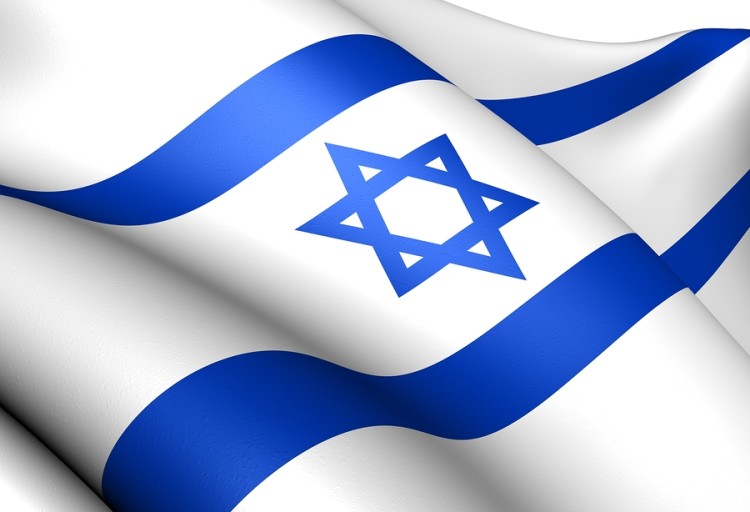How a 1929 Dispute Frames Temple Mount Conflict: Noah Feldman

(Bloomberg View) —Given the scale of the Israeli-Palestinian conflict, it may seem strange that the latest round of violence was triggered by metal detectors. But the metal detectors in question were installed by Israel at the entrances to the Temple Mount/Haram al-Sharif, arguably the most contested sacred precinct on earth, in response to a fatal Palestinian attack on Israelis. Late Monday, Israel was negotiating with Jordan over the removal of the detectors, in a bid to ease a growing crisis.
At least since 1929, when massacres associated with another superficially trivial change at the site resulted in almost 250 deaths, the holy site has been the symbolic flashpoint of the broader struggle.
What’s particularly worrisome is that, when the focus turns to the Haram, a conflict over land, power and identity is pulled inexorably in the direction of religion. In that sphere, competing claims to the truth make a peaceful resolution even more difficult to accomplish.
A leading historian has called 1929 “year zero of the Israeli-Arab conflict.” The events are the subject of a prize-winning book, written with the goal of being painstakingly balanced (maybe too painstakingly).
Like almost everything else in Israel-Palestine, those events have different names reflecting different perspectives. Israelis call them the “1929 massacres” or the “1929 occurrences.” Palestinians call them the “Buraq uprising” or “Buraq revolution,” using the Arabic name for the Western Wall.
You won’t be surprised to hear that what really caused the 1929 events is a complex, contested historical question unto itself. But most accounts agree that one important trigger was a fight about the placement of a mehitza, or gender-dividing barrier, at the site of the Western Wall during Jewish prayers on the Day of Atonement in September 1928.
The barrier hinted that the space in front of the Western Wall — then just an alley, not the extensive plaza of today — was being used as a regular site for formal prayer, which would require such a barrier dividing men and women under Orthodox Jewish practice. In the absence of a barrier, the site was viewed as one where Jews might recite Psalms or offer private prayers, not engage in the collective prayers that take place in synagogues.
The Palestinian objection to the barrier was that it violated an agreement referred to as the “status quo” at the Temple Mount/Haram site. The idea was that, under the British government established by a League of Nations mandate after World War I, Jews and Arabs would both follow the same practices that had existed under Ottoman rule.
The status quo agreement remains in place today, more or less. And so it is highly significant that the new metal detectors are being described by Palestinians as violations of the status quo — using precisely the same complaint as 1929.
A change in the status quo is so full of meaning for the Palestinians who fear today, as they did in 1929, that Israel intends to take over the Haram and reclaim it as the site of Temple of Herod and Solomon — part of the historical land of Israel.
Just as in 1929, officials of Israel (or at that time, officials of the Zionist movement) flatly deny such aspirations, and paint them as Palestinian paranoia.
The truth is more subtle. Jews in Palestine in 1929 didn’t have a state, much less a plan to take over the Temple Mount. But some did aspire to a Jewish state that would rule all of historical Israel — and Palestinians knew that.
At the time, almost all Orthodox Jewish religious authorities prohibited Jews from even setting foot on the Temple Mount. In the aftermath of 1929, Rabbi Abraham Isaac Kook, the most intellectually influential Orthodox Zionist, then chief Ashkenazi rabbi of mandatory Palestine, testified before a British commission that the Messiah would build the third Temple.
But in recent years, the Orthodox consensus has significantly changed. Many rabbis now hold that it is permissible for Jews to visit those portions of the Temple Mount that would have been open to ordinary Israelites (as opposed to priests only) in ancient times. Tens of thousands of Orthodox Jews have visited the Temple Mount in accordance with these rabbinic authorities. Some writers have tried to explain away Rabbi Kook’s testimony as situational, aimed at placating British and Palestinian fears.
A growing number of Zionist Orthodox Jews now believe that it would be permissible to rebuild the temple and restore the sacrificial cult if it were practically possible. A handful of zealots try each year to sacrifice the paschal lamb on Passover somewhere near or on the site.
Palestinians know about these developments, too. The current government of Israel surely would not contemplate taking any steps to rebuild the third temple. But the idea is no longer unsayable.
As was the case in 1929, the status quo at the Temple Mount/Haram is the occasion for the violence, not its underlying cause.
The occasion matters, however, because it tends to frame the conflict as one about religion.
Two competing peoples could potentially live in the same land or lands, sharing the same space in a negotiated solution, whether two state or one state. But two competing religious truths can’t both be true in the same sense. It would be good to resolve the fight over the metal detectors soon — to keep alive the hope that the greater conflict doesn’t become a fight that no one can win.
This column does not necessarily reflect the opinion of the editorial board or Bloomberg LP and its owners.



No Comment